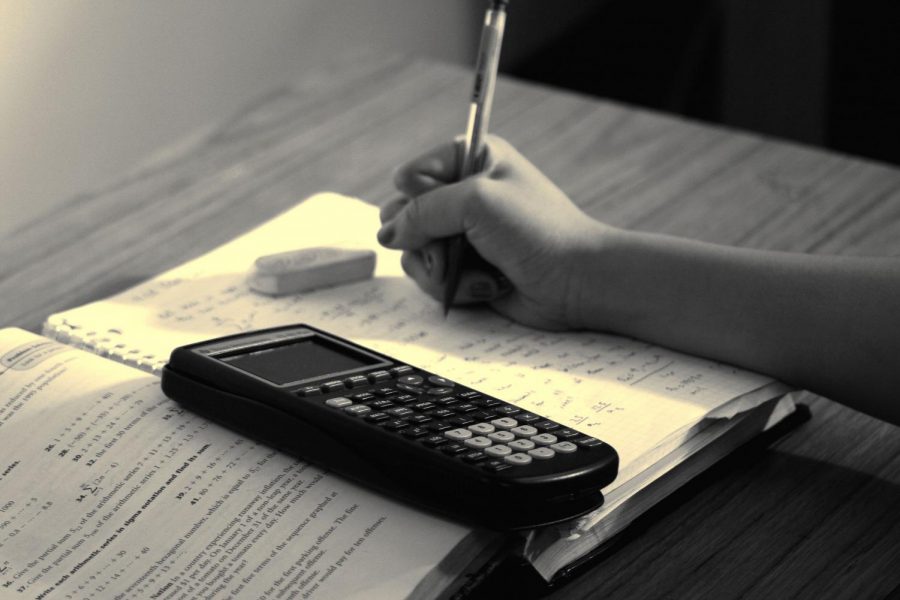The Cost of Applying To Medical School
December 2, 2019
After four years of Vanderbilt’s rigorous pre-med classes, the students that have survived this trying weed-out track are ready to apply to medical school. However, most of these students remain unaware of the extremely high cost of this application process.
There are many costs that factor into a medical school application. First, preparing for and taking the MCAT. To do the bare minimum, and only buy MCAT preparation books and practice tests, costs approximately $300. However, many students opt for MCAT classes or private tutoring. Test preparation services, such as Kaplan, start their courses at $1,799, but can reach up to $3,000, and others cost even more. And then when it comes time to actually take the MCAT, each student pays $315, and some even take it twice. Therefore, MCAT preparation and the test taking process can cost anywhere from over $600 to over $4,000. In an effort to combat a small portion of these costs, the Vanderbilt HPAO (Health Professions Advisory Office) offers used MCAT books donated by previous pre-med students to Vanderbilt students that need them.
Next comes actually applying. For primary applications on AMCAS (American Medical College Application Service), the cost of applying to your first school is $170, and every additional school is $40. Then, most schools send out a secondary application with a fee that ranges between $50 and $150 (an average of $100). Dr. Michelle Grundy, the director of Vanderbilt’s HPAO, estimates that the average Vanderbilt student applies to 21 medical schools. However, this number can be as low as 16 schools and as high as 35 schools. Therefore, the range of application costs can range from a price as low as $2,410 to around $5,000.
Finally, if lucky enough, a student will receive an invitation to interview on-site at a medical school. This trip is almost never funded by the medical school, so flight and hotel costs come out of the applicant’s pocket. Because interview invitations usually do not give more than a few weeks notice, flight costs can be extremely high. This round trip experience, given the hotel costs and short notice and narrow flying window that requires balancing missing work or school, can cost up to $1,000. If an applicant is lucky enough to receive multiple interview invitations, they have to pay this price several times.
Therefore, applying to medical school could cost roughly between $3,500 and $10,000 in total, depending on how many schools applicants choose to apply to, how expensive their MCAT preparation is, and how many interviews they are invited to and choose to attend. For this reason, the more money one spends on the medical school application process, the greater one’s odds are of getting in. Students are not reimbursed regardless of whether or not they are accepted.
Sangami Pugazenthi, a Vanderbilt senior currently applying to medical school, notes that it can be expensive to even get to the point of being a competitive applicant. She comments, “The fact that the application process is so competitive and so selective forces students to apply to a huge number of schools and attend as many interviews as possible, making the cost of the application process skyrocket. There are also many medical school consultation services that are incredibly expensive where students pay to have professionals give extra help on building a strong application, application essays, and interviews.” This makes socioeconomic status play an even greater role in the application process.
In an effort to combat high application costs, the AAMC (American Association of Medical Colleges) offers a fee assistance program. However, the eligibility requirements for this are narrow, as qualifications are based on the U.S. Department of Health and Human Services’ poverty level guidelines. The award includes reduced MCAT exam fees and reduced AMCAS application fees. However, this support does not include people that, while not considered to be living in poverty by the U.S. Department of Health and Human Services, still struggle to pay such a large application fee.
So how much does the AAMC make from these application fees? The AAMC reports that in the 2019-2020 application cycle, they received 896,819 applications from 53,371 applicants. This sums to a total of $43 million in application fees that just go to the AAMC, as this does not include secondary fees that go directly to the medical school that the applicant has applied to. Furthermore, after the application cycle, there are only 21,869 matriculants. So, only 41% of people that pay these fees actually end up getting into medical school that year.
These soaring costs raise the question: How can we address this problem? Opportunity Vanderbilt replaces student loans with grants and scholarships— perhaps there could be a fund dedicated to reimbursing all types of medical school application costs for students on financial aid at Vanderbilt. A program such as this could support students that want to go to medical school and help narrow the socioeconomic gap in the application process. In addition, medical schools could offer programs where interviewees are hosted by current medical students at the institution, which would eliminate the need for hotels, another often burdensome fee.
Some medical schools and the AAMC have made strides to try to mitigate these disparities. For example, the New York University School of Medicine offers full-tuition scholarships to all of their students, making their medical school tuition-free. On these efforts, Sangami comments, “I would like to challenge institutions to take a more equitable rather than equal approach when trying to solve these issues. So, put more resources into helping people who begin at a larger disadvantage rather than just making all costs equal for everyone.”
The price of applying to medical school is a pressing issue, but there are many different ways that medical schools, the AAMC, and even Vanderbilt can address it. Becoming a doctor is an altruistic ambition that students at Vanderbilt and across the world selflessly embark upon, and they should not have to suffer financially in this pursuit.







